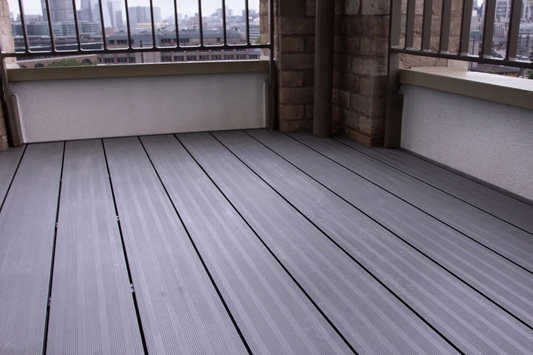
EnviroBuild Publishes its First Environmental Product Declaration, for Hyperion Composite Products
EnviroBuild are proud to be the first company in the UK to publish the environmental impact of its composite products with an Environmental Product Declaration (EPD).
EnviroBuild Hyperion EPD
EnviroBuild is the first company in the UK to publish the environmental impact of its composite products with an Environmental Product Declaration (EPD). This is something that has been in the works for some time; EPDs are reports which follow an international standard for determining Life Cycle Assessments for products. We will be performing Life Cycle Assessments for other products and releasing EPDs for those too. You can read the Hyperion Composites EPD here.
The question we’ve been asking ourselves is how sustainable exactly are our composite products? A Life Cycle Assessment includes the impact on the environment at every stage of the product’s life, including manufacturing, shipping, treatment and disposal. The impact on the environment also covers more than just greenhouse gas emissions (global warming potential), we’ve also looked into things like ozone depletion, the environmental effect on bodies of water, the creation of any harmful substances and water consumption.
What is Global Warming Potential?
Greenhouse gases warm the Earth by absorbing energy and slowing the rate at which the energy can escape to space. Global warming potential is the heat absorbed by any greenhouse gas in the atmosphere. Global warming potential weighs up the impact of different gases by measuring them all against the impact of carbon dioxide (CO₂), a unit called a CO₂ equivalent (CO₂e).

What is a Carbon Dioxide Equivalent (CO₂e)?
We’ve measured the total global warming potential of Hyperion Composites in CO₂ equivalents (CO₂e). This way we can consider all greenhouse gases under one unit, allowing us to assess the global warming potential of every step of the manufacturing, usage and eventual disposal of the product. For example, 1 kg of methane has 28x the global warming potential of 1 kg of CO₂, meaning we can express methane as CO₂e, measuring it's impact alongside other greenhouse gases.

What is Hyperion Composites’ Contribution to Global Warming?
The graph below shows the major contributors to the overall impact of the product, broken down into the CO₂e input and output. It's important to highlight we are assessing the usage and disposal stages, whereas several manufacturers would only consider manufacture, making them seem carbon neutral or even carbon positive.
Let’s have a look into what’s happening:
- The Net CO₂e works out at +1.53 kg per kg of composite, when looking at every stage of the product lifecycle and accounting for our move to wind energy. Where we are using renewable energy, we purchase it in the country of production. This is so we aren't polluting other countries and then trying to balance it with planting trees in the UK.
- The CO₂ Input bar shows greenhouse gases being removed from the atmosphere. The CO₂ Output bar shows greenhouse gases being released.
- The Raw Material processing stage absorbs more CO₂ than is released. This is because most of the raw material is from waste wood, which absorbs CO₂ during it's growth. Most of the rest of the raw material is recycled plastic, which has very little impact.
- The Manufacturing stage is indicated by the green segment on the otherwise red CO₂ output bar. This is very small due to our factory moving to wind energy. By doing this, we’ve shaved off about 0.7 kg of CO₂ per kg of composite! The striped section on the end shows how much bigger the CO₂ output would be without using renewable energy here.
- The Disposal stage is by far the largest contributor of CO₂ This is where we consider the product biodegrading and releasing its absorbed carbon to the atmosphere. The disposal of the product is a massive influence on the final impact.

What Can EnviroBuild Do To Increase Sustainability Going Forward?
Our next steps are to try and reduce the environmental impact at each stage. Just as we noticed we could make a sizable impact on manufacturing by moving to wind energy, we can look at other steps along the lifecycle too.
Our focus is on reducing the environmental impact of the product and not just offsetting, where possible. Offsetting doesn't necessarily reduce emissions, as the original fossil fuel or other resources are still being used in production and across the rest of the life cycle. This is because offsetting involves reducing emissions elsewhere, therefore it doesn't necessarily prevent the resources being used up as they are still being used in the initial production.
EnviroBuild is continually measuring and analysing the environmental impact of all of our products through LCAs and publishing EPDs, and using the results to objectively find the most effective way to reduce the environmental impacts as much as possible. The move to wind energy for Hyperion was just the start.

Find out more about our commitment to sustainability here



